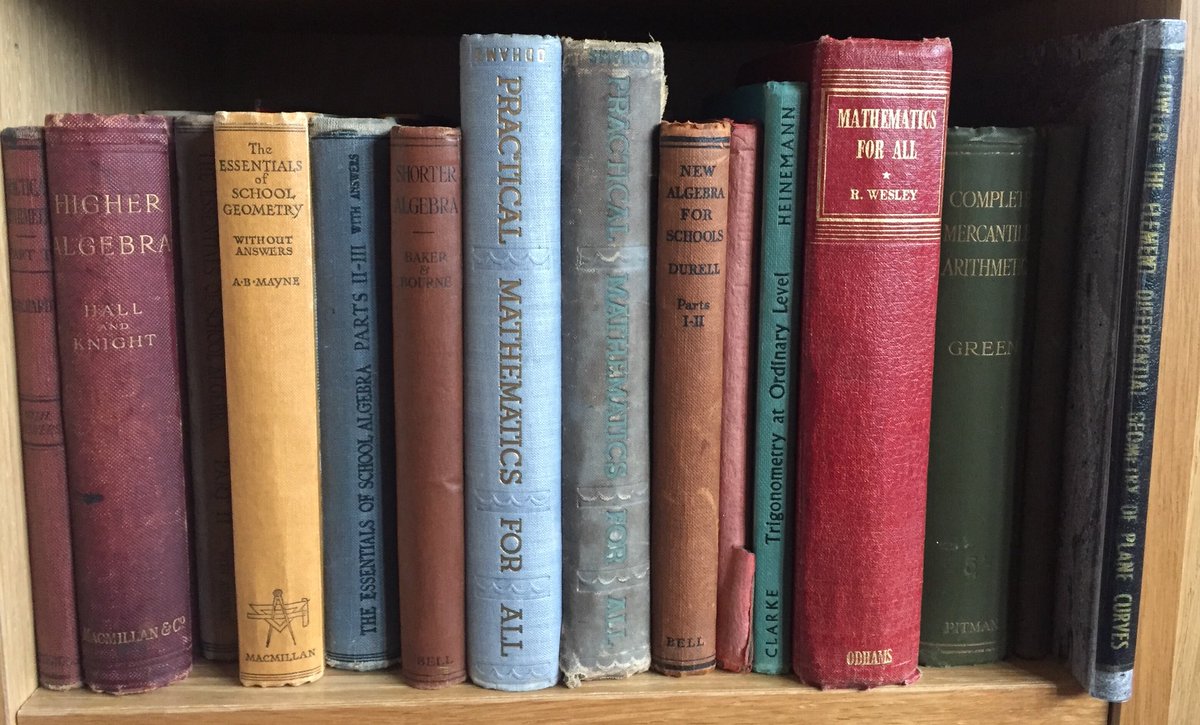Subject cognition for maths teachers isn't only most beingness able to produce the maths - that's the slowly flake - it's too most knowing how to explicate concepts clearly, knowing multiple methods together with approaches, knowing mutual misconceptions, knowing history, etymology, narrative together with and then on. So, inwards the involvement of plain of written report cognition development, today I convey you lot closed to maths from the past. I'm focusing on surds hither (because everyone loves surds!), together with I promise to convey you lot similar posts most other topics over the coming months.
Definitions
In Elementary Algebra for Schools (Hall & Knight, 1885), the chapter entitled 'Elementary Surds' starts amongst closed to definitions:
Whether we'd even together with then variety those algebraic damage every bit surds is debatable, but otherwise the wording of the definition ('when a root cannot hold upwardly just obtained') has been pretty consistent over the years. Here it is 1 time to a greater extent than inwards 'A Shorter Algebra' (Baker & Bourne, 1927):
The mass subsequently goes on to advert to 'surdic expressions' - I've never used the give-and-take surdic together with I'd similar to come across it dorsum inwards mutual usage!
In 'The Essentials of School Algebra' (Mayne, 1961) nosotros accept the next definition of surd, which offers to a greater extent than clarity past times providing a few examples together with non-examples:
Note too that surds of venture 2 were sometimes referred to every bit 'quadratic surds'. This is closed to other human face that nosotros seem to accept lost from our secondary schoolhouse vocabulary. We at 1 time bargain almost solely amongst quadratic surds, inwards fact I accept seen a position out of websites together with resources claim that only square roots tin hold upwardly called surds, which is only evidently wrong.
Contrast the precise vocabulary together with detailed definitions inwards quondam textbooks amongst the disappointing 1 work description nosotros accept inwards a modern 24-hour interval textbook (Edexcel GCSE Maths, OUP, 2016).
I wonder why textbook authors gave upwardly on thorough definitions.
Justification
Interestingly, quondam textbooks claim that the purpose of surds isn't absolutely necessary because, amongst extensive position out operate (ie using the procedure of evolution to respect roots), nosotros tin respect the value of whatsoever surd to a suitable aeroplane of accuracy.
Back inwards the days when maths was all done past times hand, they were by together with large happy amongst 'accurate enough' together with didn't insist on exactness. In fact inwards 'A Shorter Algebra' it says,
"Results inwards surds are only practically useful when expressed every bit decimals".
It seems that although surds were oft used for efficient workings, numerical answers were rarely given inwards surd form. Here nosotros come across that rationalising the denominator is done to brand numerical calculations easier, because multiplying past times a decimal is easier than dividing past times a decimal:
Vocabulary
Though nosotros all know together with purpose the phrase 'simplest form' to pull a surd that has been simplified, I'm non certain that many of us purpose the term 'entire surd' to pull an unsimplifed surd.
Textbooks used to characteristic exercises where students had to convert simplified surds into entire surds - it's rare to come across exercises on this now.
The method for adding surds hasn't changed over the years. We even together with then add together 'like surds' or 'similar surds' (perhaps nosotros to a greater extent than oft advert to them 'like terms' though),
And the procedure for rationalising hasn't changed over the final 130 years. We multiply the denominator past times a 'rationalising factor'. Where necessary, the rationalising cistron volition hold upwardly the conjugate of the denominator. We even together with then advert to the conjugate at 1 time - it's proficient that at to the lowest degree closed to of the formal linguistic communication has non been lost.
Of course, measure problems inwards the 1960s were far harder than they are now.
I don't request to tell you lot that exercises used to hold upwardly a lot longer together with to a greater extent than challenging than they are inwards most modern maths classrooms. Here's an instance of an practise on rationalising - this 1 is from 1885. Note that the kickoff x questions are only for practising finding the production of 2 conjugates:
Notice the tricky typesetting of those pesky vinculums!
For comparison, modern textbooks accept only one-half a dozen questions on the same skill.
The books I accept been looking at (one from 1885, 1 from 1927 together with 1 from 1961) popular off on amongst foursquare rooting binomial surds together with solving 'irrational equations'. I could include a lot to a greater extent than most surds here, but to hold this postal service to a reasonable length I volition larn out it there! You larn the take in - a lot has changed, all except the mathematics itself.
I've late bought loads of quondam textbooks from the early on 1900s together with am hoping to produce a presentation most them at an upcoming conference (possibly #mathsconf17), together with then if you lot respect this materials interesting produce come upwardly along.
 |
| Part of my quondam textbook collection! |














